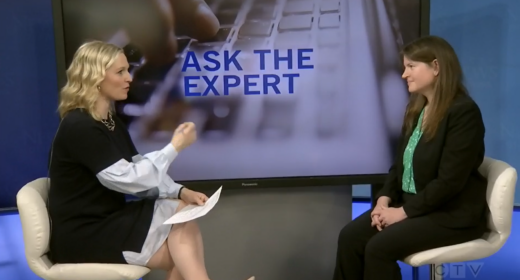Effective on September 1, 2010, significant changes to the Ontario Auto Insurance claims regime came into force. These changes principally impact the Statutory Accident Benefits Schedule (“SABS”) regime, but they also have some implications for tort claims.The Ontario Government, in its Policy Announcement of November 2, 2009, outlined that the goals of this vast legislative and regulatory reform were the protection of consumers, increasing consumer choice, streamlining the Auto Insurance system and the reduction of transaction costs.
This article deals principally with changes to the SABS and it will only briefly mention the amendments relating to the tort aspect of claims. It is not intended to discuss the actual or intended benefits of the changes, but rather to provide an overview and a summary of the most significant amendments in the SABS, by topic.
Medical and Rehabilitation Benefits
- Benefits available in non-catastrophic claims will be reduced from $100,000 to $50,000 (section 18 (1) of the new SABS), with a possibility for consumers to buy up optional benefits to $100,000 or $1,000,000 (section 28 (1) 5).
- This new basic coverage of $50,000 will include “all fees and expenses for conducting assessments and examinations and preparing reports in connection with any benefits” (section 18 (5)) ; Insurers assessments will not be included in the $50,000, and neither will be IRB related assessments. This a significant practical change for insurers: indeed, all former section 24 assessments will now form part of the $50,000 allocated for Medical and Rehabilitation benefits as opposed to the former separate limitless reserve.
- It is expected it may re-shape the traditional use made by plaintiff’s counsel of tort and SABS expert reports. Fewer SABS expert reports will be available to plaintiffs and one can expect that some plaintiffs may try to claim the expense of SABS reports in their tort claim as special damages.
- Finally, the amount of $50,000 may not be sufficient in the cases of more severe injuries and may lead to serious difficulties in efficiently rehabilitating certain injured persons, until and unless they are eventually determined to be catastrophically impaired.
- This drastic reduction in Medical and Rehabilitation benefits could potentially give rise to litigation by consumers against brokers for negligent advice at the time of the purchase of the policies.
Creation of a new category of injury: “Minor Injuries”
- This is an innovative amendment: “Minor Injuries” are defined as a “sprain, strain, Whiplash Associated Disorder, contusion, abrasion, laceration or subluxation and clinically associated sequelae”. Each of these medical terms is specifically defined in the new regulation.
- Minor injuries claimant will only receive $3,500 worth of treatment and assessments (section 18).
- However, this $3,500 limit will only apply where an impairment is “predominantly a minor injury” (section 18 (1)) and it will not apply to an insured person if his or her practitioner determines and provides compelling evidence that the insured person had a pre-existing condition that will prevent the insured person from achieving maximal recovery from the minor injury if the insured is subject to the $3,500 limit (section 18 (2)).
- While the intent of this legislative creation is clear, that is to limit the cost of treatments and assessments with respect to a significant portion of claims, the interpretation of this new scheme is not. The Financial Services Commission of Ontario and courts will need to interpret what is meant by “predominantly”, “compelling evidence” and “maximum recovery”. One can expect fierce battles and disagreement on these issues between claimants and insurers.
Caregiver and Home Maintenance and Housekeeping benefits
- Both categories of benefits are simply eliminated in non catastrophic cases (section 13 (1) and 23 respectively).
- Insureds can opt for these benefits in non catastrophic cases by paying additional premiums.
- Expenses relating to Caregiver and Home Maintenance and Housekeeping have to be incurred and will only be available where there is a substantial inability to perform the related tasks.
- “Incurred” expense is now defined as an expense in respect of goods and services which the insured person has received and that the insured person has paid, promised to pay or is otherwise legally obligated to pay, and only where the person who provided the goods or services did so in the course of his or her regular occupation or profession or sustained an economic loss as a result of providing the goods and services to the insured person.
- The principal novelty of this amendment is the condition that non-professionals providing the services sustain an economic loss, which is an attempt to reduce some of the claims made by family service providers.It remains to be seen how “economic loss” will be interpreted, and how decision makers will reconcile this definition against some of the policy concerns within the SABS where benefits for which there is entitlement are not obtained due to financial constraints.
- Plaintiffs who did not opt for these benefits in non catastrophic cases will still be able to claim the related expenses in their tort action as special damages.
Attendant Care
- The amount of available Attendant Care benefits in non catastrophic cases is reduced to $36,000 from the current amount of $72,000 (section 19 (3)).
- An oddity is that the maximum payment per month remains $3,000, which means that Attendant Care benefits will run out after one year instead of two years, unless the insured chooses to receive only $1,500 per month.
- Expenses also have to be incurred (section 19 (1)).
Assessments
- A new limit of $2,000 on the fees for any one assessment or examination will be imposed (section 25).
- Home assessments will not be available in minor injuries cases.
- Rebuttal assessments will also be eliminated altogether, and no monies will be paid for Future Care Costs and Life Care Plans in the First Party system.
- One can expect that the excess in the numbers and costs of assessments that the industry has experienced under the current SABS regime should be curved down by the new measures, although that burden may well just shift onto the tort side of claims.
Income Replacement Benefits
- The amendments provide for a new method of calculation: 70% of gross income (section 7 (1)) instead of the former 80% of net.
- The maximum weekly benefit remains at $400.
- Optional buy up to $600, $800 or $1,000 per week will still be available (section 28).
Elections
- Caregiver benefits are only available in catastrophic impairment cases, hence a re-election for caregiver can be made when the catastrophic determination has been made.
Single Leg Amputee
- The definition for catastrophic now specifically includes single leg amputees.
Tort changes
- The changes relating to tort claims are minor in comparison to the SABS changes and deal with the applicable deductibles.
- The $15,000 deductible applicable to Family Law Act claims in fatal cases is eliminated.
- Insureds will have the option to purchase an endorsement with the effect to reduce the existing deductibles of $30,000 and $15,000 respectively to $20,000 and $10,000.
In summary, while some of the changes are almost self-explanatory and should not give rise to any interpretations, other amendments such as the ones dealing with the new category of “minor injuries” and “incurred expenses” will require the courts’ interpretation before we can fully assess their significance on the automobile insurance industry’s practice. It also remains to be seen what the practical impact of reducing available benefits will have on claims as a whole, as one can anticipate that benefits not available under the SABS will simply shift to the tort aspect of the claims.
Finally, insurers and brokers will need to have in place, and follow, guidelines regarding, and keep appropriate records of, the circumstances under which the insureds/consumers elected or declined to buy certain optional benefits, in order to limit their exposure for having provided negligent advice. Akin to the practice already existing in the financial and investment industry, a know-your-client approach will likely become a staple for insurance brokers.


